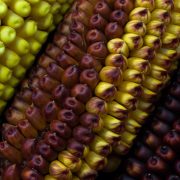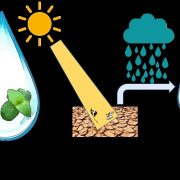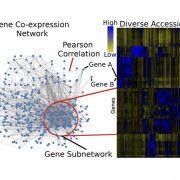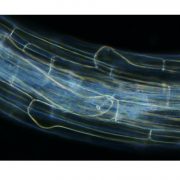
Ubiquinone (Coenzyme Q) Biosynthesis in Plants: Free that Ring
Research, The Plant Cell, The Plant Cell: In a NutshellSoubeyrand et al. use genetic and biochemical evidence to show that Arabidopsis and tomato can derive the ubiquinone precursor 4-hydroxybenzoate from the B-ring of kaempferol. Plant Cell https://doi.org/10.1105/tpc.18.00688.
By Eric Soubeyrand, Timothy S. Johnson, and Scott Latimer, University…

Enzymatic Sweeteners as Tools for Biotech Applications
Research, The Plant Cell, The Plant Cell: In a NutshellLouveau et al. investigate plant natural products in the large family of enzymes called arabinosyltransferases https://doi.org/10.1105/tpc.18.00641
Background: Plants produce a diverse array of natural products. These compounds have important ecological functions, providing protection against pests,…

Petunia Battlefield in Style: S-RNases vs. SLF proteins
Research, The Plant Cell, The Plant Cell: In a NutshellSun et al. use CRISPR/Cas9 in Petunia to establish the essential role of SLF proteins in self-compatibility and reveal their complex interactions with S-RNases. Plant Cell https://doi.org/10.1105/tpc.18.00615.
By Linhan Sun and Teh-hui Kao, The Pennsylvania State University
Background: Plant…

Tomato Hairs and Metabolites - A Dual Narrative
Research, The Plant Cell, The Plant Cell: In a NutshellXu et al. find that the transcription factor SlMYC1 is involved in trichome formation and regulates mono- and sesquiterpene biosynthesis differentially in leaf and stem trichomes in tomato.
By Robert Schuurink, Department of Plant Physiology, University of Amsterdam, NL
Background: Many plants…

The Identity of an Unstable Pigmenting Factor
Research, The Plant Cell, The Plant Cell: In a NutshellWittmeyer et al. discover a CACTA element that regulates ufo1 epialleles. Plant Cell (2018) https://doi.org/10.1105/tpc.18.00546
By Kameron Wittmeyer and Surinder Chopra
Background: A single gene can produce different outcomes depending on when, where, and at what levels it is turned on. A classical…

The Complex Evolution of Desiccation Tolerance
Research, The Plant Cell, The Plant Cell: In a NutshellVanBuren et al. examine the evolution of desiccation tolerance in Lindernia. Plant Cell (2018). https://doi.org/10.1105/tpc.18.00517.
By Robert VanBuren and Dorothea Bartels
Background: Plants have evolved numerous strategies over the last ~400 million years to overcome water limitations. The…

Integrating Coexpression Networks with GWAS
Research, The Plant Cell, The Plant Cell: In a NutshellSchaefer et al. integrate co-expression networks from three diverse maize gene expression data sets with genome wide association study data to prioritize genes related to the maize grain ionome. Plant Cell https://doi.org/10.1105/tpc.18.00299
Background: Genetics examines the relationships between…

More than Ca Signaling - the pH Face of the Ca Coin
Research, The Plant Cell, The Plant Cell: In a NutshellBehera et al. show that cytosolic Ca2+ transients induced by different stimuli are linked to cytosolic pH transients. Plant Cell https://doi.org/10.1105/tpc.18.00655.
By Alex Costa (University of Milan), Richard Morris (John Innes Centre, Norwich Research Park), and Markus Schwarzländer (University…

How a Cyst Nematode Alters Plant Host Gene Expression
Research, The Plant Cell, The Plant Cell: In a NutshellVijayapalani et al. find a sugar beet cyst nematode protein effector that epigenetically regulates plant rRNA gene dosage, which is a crucial requirement to promote cyst nematode parasitism. Plant Cell https://doi.org/10.1105/tpc.18.00570.
Background: Cyst nematodes are plant-parasitic animals that…

